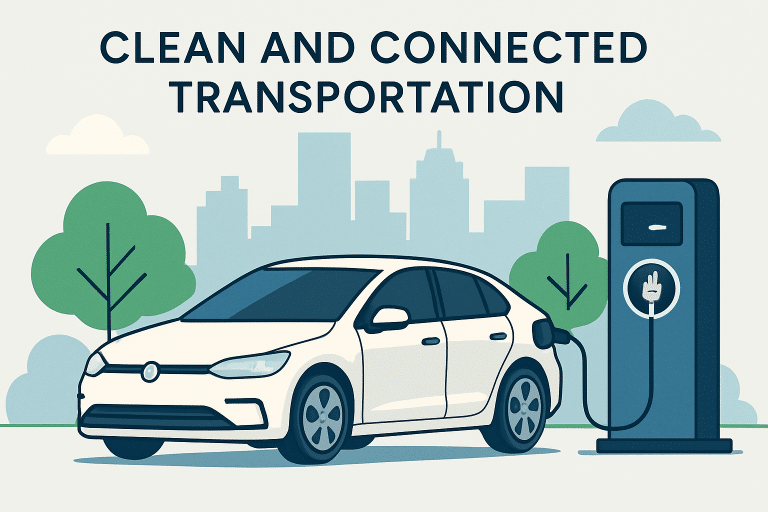Key Takeaways
- EVs are reshaping vehicle design and manufacturing processes, making cars more spacious and maintenance costs lower.
- Rapid improvements in battery technology are boosting EV affordability and range.
- Expansion of fast-charging and wireless charging networks addresses the issue of range anxiety.
- Strong policy frameworks and government incentives are speeding up EV adoption and infrastructure growth.
- Electric vehicles are reshaping city planning and public transportation integration.
Electric vehicles (EVs) are no longer a futuristic ideal but a tangible force actively reshaping the global transportation sector. With advances in clean energy and a market flooded by innovative models, EVs are rapidly becoming the standard for eco-friendly travel and smart city development. This evolution delivers profound shifts not only in technology and environmental stewardship but also in the entire lifecycle of the automobile industry, including the way people research and acquire used cars for their commuting needs. Consumer preferences for sustainability, urban air quality concerns, and cost-effective battery strategies drive the transition to electric vehicles (EVs). As cities and automakers adapt to modern transportation, EVs influence infrastructure investments and government incentives. Automakers are shifting towards cleaner cars with new supply chains and user-centric designs, marking a significant evolution in the industry. Advances in energy storage and charging reinforce the central role of EVs in transit modernization and achieving net-zero emissions, while supporting resources enhance convenience and efficiency in modern transportation.
Revolutionizing Vehicle Design and Manufacturing
Electric vehicle architecture differs from traditional models by eliminating bulky engines and transmissions. This enables more spacious, flexible interiors with features like flat floors and modular seating, appealing to luxury and mass-market cars. EVs have fewer moving parts, reducing maintenance costs. The industry’s focus on local battery and semiconductor manufacturing boosts economic growth, creates jobs, and enhances regional competitiveness as automakers reshore supply chains to secure batteries and leverage government incentives.
Advancements in Battery Technology
Batteries are vital to EVs, with recent innovations making them more efficient and affordable. Lithium-ion batteries now offer higher energy density, enabling better range and smaller, lighter packs. The use of nickel-rich cathodes and new materials helps EVs reach 300+ miles per charge, reducing range anxiety. Research on solid-state batteries is advancing, promising faster recharging—possibly in 10 minutes—greater safety, and longer range. This could lower costs and boost adoption.
Expansion of Charging Infrastructure
The deployment of EVs depends on widespread access to affordable charging stations. Progress includes cities building public fast-charging in shopping centers and transit hubs, and employers and apartments adding private chargers for daily commuters and residents. Innovations like wireless charging and electrified roads are being tested to enable seamless recharging on the move. U.S. federal programs and European initiatives offer funding and standards to support cross-manufacturer compatibility, including a 2023 bill aiming to expand wireless charging for highways and city centers.
Government Policies and Incentives
Strong policy guidance is crucial for widespread EV adoption. Countries like the U.S., Japan, and Europe offer tax credits and incentives to lower entry barriers. The 2022 U.S. Inflation Reduction Act extended these credits, added benefits for used EVs and battery supply chain investments, fostering a comprehensive electric mobility ecosystem. These incentives, along with investments in charging and manufacturing, boost consumer confidence and reduce carbon emissions. Support for battery recycling and second-life uses is growing, indicating a future circular energy economy.
Impact on Urban Planning and Infrastructure
Urban planners and municipalities are updating zoning, development codes, and public transit to accommodate EVs. New apartments and commercial buildings increasingly include EV charging stations to attract eco-conscious residents. Sharing programs and electric buses promote affordable, eco-friendly transport, reducing congestion and pollution. Integrating EVs into car-sharing and municipal fleets offers affordable private transport options and supports emissions goals. These changes show how EV adoption benefits the community, land use, and public health.
Consumer Adoption and Market Trends
Today’s buyers are more informed, considering factors like ownership cost, incentives, and sustainability when choosing vehicles. EVs range from compact cars to trucks and SUVs, offering options for families, city dwellers, and fleets. Lower battery costs and support services have increased interest among used-vehicle buyers and urban commuters. EV sales in North America are expected to rise as infrastructure and preferences align. This shift prompts automakers and startups to innovate, disrupting resale and aftercare markets.
Future Outlook
Electric vehicles are positioned at the center of transportation’s next chapter. Their integration with renewable energy sources and smart infrastructure is likely to expand as technology advances and economies of scale kick in. Ongoing challenges include equitable access to public chargers, battery material sourcing, and responsible recycling. By addressing these issues and sustaining cross-sector partnerships, stakeholders can ensure that the shift to electric mobility is both sustainable and inclusive for communities worldwide.
